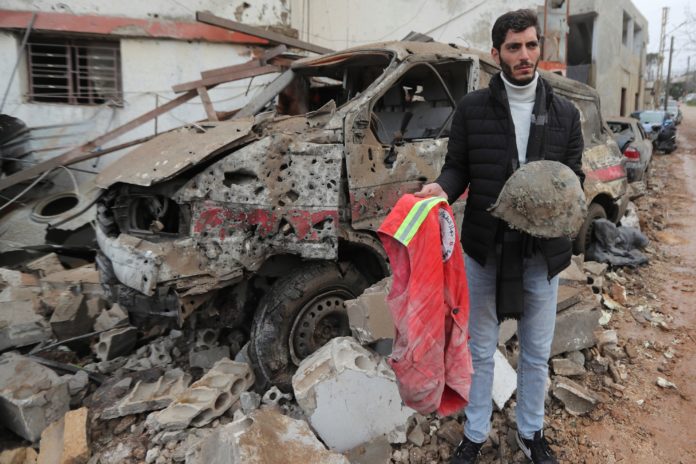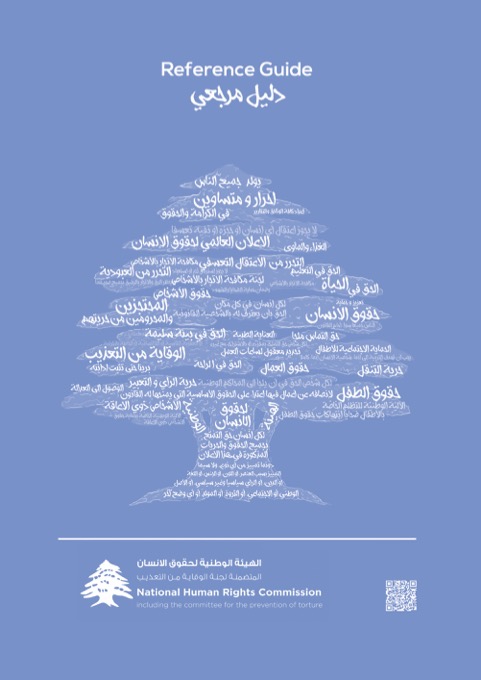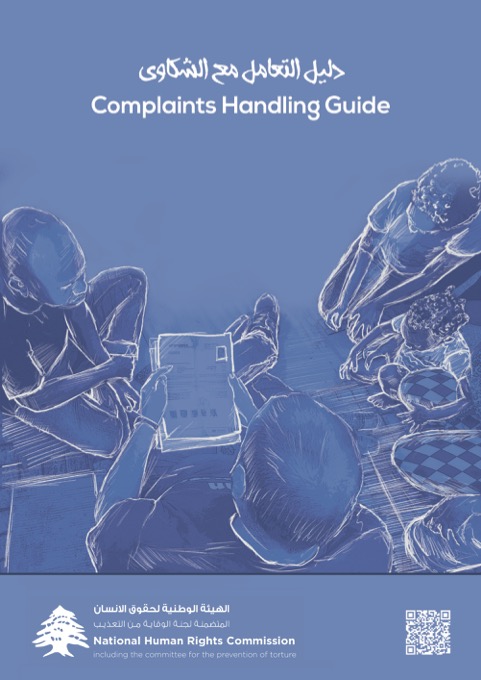An Israeli strike on an emergency and relief center in south Lebanon on March 27, 2024, was an unlawful attack on civilians that failed to take all necessary precautions, Human Rights Watch said today. If the attack on civilians was carried out intentionally or recklessly, it should be investigated as an apparent war crime. The strike, using a US-made Joint Direct Attack Munition (JDAM) guidance kit and an Israeli-made 500-pound (about 230 kilograms) general purpose bomb, killed seven emergency and relief volunteers from the town of Habbarieh, five kilometers north of the Israeli-occupied Golan Heights.
The strike, after midnight, targeted a residential structure that housed the Emergency and Relief Corps of the Lebanese Succour Association, a nongovernmental humanitarian organization that provides emergency, rescue, first aid training, and relief services in Lebanon. Human Rights Watch found no evidence of a military target at the site. Just a week before, Israel reportedly submitted written assurances to the US State Department that US-provided weapons were not being used in violation of international law.
“Israeli forces used a US weapon to conduct a strike that killed seven civilian relief workers in Lebanon who were merely doing their jobs,” said Ramzi Kaiss, Lebanon researcher at Human Rights Watch. “Israel’s assurances to the United States that it is abiding by the laws of war ring hollow. The US needs to acknowledge reality and cut off arms to Israel.”
The United States should immediately suspend arms sales and military assistance to Israel given evidence that the Israeli military is using US weapons unlawfully, Human Rights Watch said. Lebanon’s Foreign Ministry should also swiftly move forward with filing a declaration with the International Criminal Court, enabling it to investigate and prosecute crimes within the court’s jurisdiction on Lebanese territory since October 2023.
In a Telegram post on March 27, the Israeli military said that “fighter jets struck a military compound in the area of al-Habbariyeh in southern Lebanon” and that “a significant terrorist operative belonging to the ‘al-Jama’a al-Islamiyya’ [The Islamic Group] organization who advanced attacks against Israeli territory was eliminated along with additional terrorists who were with him.” A parliament member representing The Islamic Group, a Lebanese Islamist political party whose armed wing, the Fajr Forces, has been engaged in cross-border hostilities with Israel, told Human Rights Watch that no fighters from the group were killed in the strike, and denied any affiliation with the Emergency and Relief Corps of the Lebanese Succour Association.
Human Rights Watch interviewed six people from Habbarieh: the parents of three people killed, the owner of the house, a member of the emergency and rescue team who left the center shortly before the strike, a resident who was at the site shortly after the attack, and a local official. Human Rights Watch also spoke to the head of the Emergency and Relief Corps at the Lebanese Succour Association, a member of parliament representing the Islamic Group, and two people at the General Directorate of the Lebanese Civil Defense, including the head of the civil defense team that pulled the bodies out of the rubble.
Human Rights Watch also reviewed photographs of weapon remnants found at the site; photographs and videos of the site before and after the attack shared online by journalists, news agencies, and rescue workers; and footage shared directly with researchers. Human Rights Watch sent a letter with findings and questions to the Israeli military and the US State Department on April 19 but has not received a response as of time of publishing.
Footage of weapons remnants found at the site of the strike, and shared with Human Rights Watch, included a metal remnant marked “MPR 500,” confirming it was a 500-pound class general purpose bomb, made by Israeli weapons manufacturer Elbit Systems, and remnants of the strake and a tail-fin belonging to a JDAM guidance kit, produced by the US-based Boeing Company.
Two verified photographs, posted on the Emergency and Relief Corps Facebook page on March 28 and taken at the attack site, show remnants in the same location seen in the photographs sent directly to Human Rights Watch. The photographs were shared by a Habbarieh resident who was at the site shortly after the attack and by a journalist in Beirut who shared photographs of the same set of remnants displayed at the funeral service for the seven volunteers.
The seven people killed were all volunteers who had begun working with the center shortly after it opened its branch in Habbarieh in late 2023, their families, colleagues, and the head of the Emergency and Relief Corps said. Those killed were 18-year-old twin brothers Ahmad and Hussein al-Chaar, Abdul Rahman al-Chaar, Ahmad Hammoud, Mohammed Farouk Atwi, Abdullah Atwi, and Baraa Abou Qaiss; the oldest person of this group was 25.
The attack came shortly after 12:30 a.m., killing all seven workers at the center, said Samer Hamdan, the head of the civil defense team at the site. Photographs and videos taken by residents and journalists show the center razed to the ground and a destroyed ambulance parked nearby with distinguishable red markings on its back and sides.
Human Rights Watch found no evidence of a military target. The Israeli military’s admission in their Telegram post about targeting the center, given it was a relief center, indicates at a minimum their failure to take all feasible precautions to verify that the target was military and avoid loss of civilian life and damage to civilian objects, making the strike unlawful.
An Islamic Group official said that while some Islamic Group supporters are volunteers in the Lebanese Succour Association, they do not include any fighters from its armed wing, the Fajr Forces. Content posted on social media and reviewed by Human Rights Watch suggests that at least two of the people killed may have been supporters of the Islamic Group. In one case, the person posted four photographs to his Facebook page with the banner and imagery of the Islamic Group between 2016 and 2018. Another photograph posted on social media showed a third person holding an assault rifle while wearing camouflages fatigues. The person’s mother said that her son, like other men in the village, used rifles for hunting and was not affiliated with any armed group. Family members of the people killed, the Lebanese Succour Association, and the civil defense all said that the seven men were civilians and not affiliated with any armed group. A member of parliament representing the Islamic Group, which has a history of issuing public statements when its fighters are killed, told Human Rights Watch that none of its fighters were killed in the strike, and the group publicly denied any affiliation with the association.
“We turned every stone,” Hamdan said. “Everything we found were emergency and medical equipment and devices. Overalls, helmets, gauze, first aid kits. That’s it.”
In retaliation for the strike, Hezbollah said that it launched rockets at the northern Israeli town of Kiryat Shimona and the headquarters of the 769th brigade later that morning. The attack by Hezbollah killed one civilian, according to media reports. Later that day, Israeli strikes killed nine people, including Hezbollah and Amal fighters and three other medical workers affiliated with the two groups. As of May 1, Israeli attacks in Lebanon since October 2023 have reportedly killed at least 73 civilians, according to an AFP tally, in addition to more than 300 fighters.
Rocket and missile strikes and other attacks into Israel by Hezbollah and armed Palestinian groups in Lebanon since October 2023 have reportedly killed at least 9 civilians and 11 soldiers. More than 92,000 people have been displaced from their homes in south Lebanon and at least 80,000 people have been displaced from northern Israel.
Under international humanitarian law, all parties to the conflict have a duty to distinguish between combatants and civilians and to target only combatants. In case of doubt whether a person is a civilian, that person must be considered a civilian. In the conduct of military operations, constant care must be taken to spare the civilian population, civilians, and civilian objects. All feasible precautions must be taken to avoid, and in any event to minimize, incidental loss of civilian life, injury to civilians, and damage to civilian objects. Each party to the conflict must do everything feasible to verify that targets are military objectives. Anyone who commits serious violations of the laws of war with criminal intent—that is, intentionally or recklessly—may be prosecuted for war crimes. The attack that destroyed an emergency and relief center containing only civilians shows a significant failure to take adequate safeguards to ensure that targets were military objectives and to prevent civilian deaths, Human Rights Watch said.
In March, Human Rights Watch and Oxfam submitted a joint memorandum to the US State Department highlighting a wide range of Israeli violations of international humanitarian law and finding that its assurances to use US weapons legally are not credible.
“The uninterrupted and unconditional flow of arms despite Israel’s systematic violations of the laws of war and impunity for those abuses facilitate the continued unlawful killing of civilians, including aid workers.” Kaiss said. “Israel’s conduct in Gaza and Lebanon violates US and international laws, and President Biden needs to stop the flow of weapons as a matter of urgency to avoid further atrocities.”


